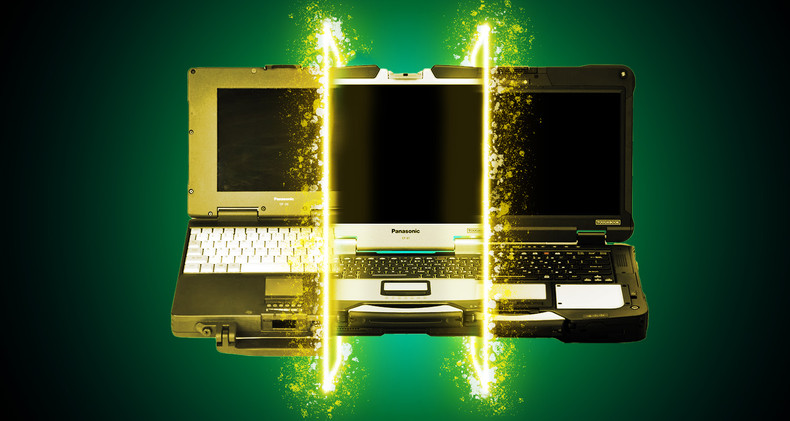Rugged Technology for a Rugged Environment
When computers were first invented they filled up a room, now they exist in our pockets and in almost every component of our life. From checking out at a grocery store to browsing the news to managing a warehouse, computers are engrained in almost aspect of our day to day. The reliance on technology to help fuel our industry, increase our efficiency and provide our entertainment has catapulted technological innovation forward. In the mid 1990s, computers were already apparent as the tool of the future but users were stymied by the lack of portability and the utter absence of durability. The need for dependable and ruggedized computers prompted a flury of innovation to solve the question of how to bring technology into every environment where it was needed.
Panasonic Toughbook
Panasonic answered the call for a ruggedized and durable computer in 1996 with the release of the Panasonic Toughbook CF-25. The Toughbook CF-25 was one of the first portable laptop computers to boast ruggedized features such as moisture and dust resistance with sealed ports, drop and shock resistance and a ruggedized chassis. The Toughbook line of computers was immediately seized upon by industries such as military, oil and gas and public safety as an answer to the dilemma of positioning technology alongside operators in the field. The Panasonic Toughbook was quickly emulated by competitors while Panasonic continued to refine the rugged computer design and increase its capabilities.
Evolving Toughbook Capabilities
As technology evolved at a breakneck pace, so did the more niche rugged technology market. Form factors such as rugged tablets soon joined rugged laptops as targetted audiences prioritized mobility as much as durability. With increasing performance, increased rugged durability and a mounting amount features, the Toughbook catalog increased with a host of different form factors, configurations and options. Optional features such as in-field internet connectivity or barcode scanning helped Toughbooks service wider and wider target audiences. The relative recent 2-in-1 laptop configuration (a rugged tablet able to dock and undock with a rugged keyboard) was an immediate hit with customers who needed the mobility of a tablet while retaining the functionality of a laptop. The introduction of the xPAK system with the Toughbook FZ-55 helped bridge the gap between limited budgets and evolving mission parameters by giving users the ability to easily customize their laptop or tablet hardware even after manufacturing.
The current fully rugged FZ-40 Toughbook laptop is a far cry from its ancestor the CF-25 of almost 30 years ago, but is the latest evolution of nearly 30 decades of customer feedback, research and development. As the most recognizable brand, Panasonic continues to lead the rugged technology industry with innovative designs and features in the Toughbook line.


